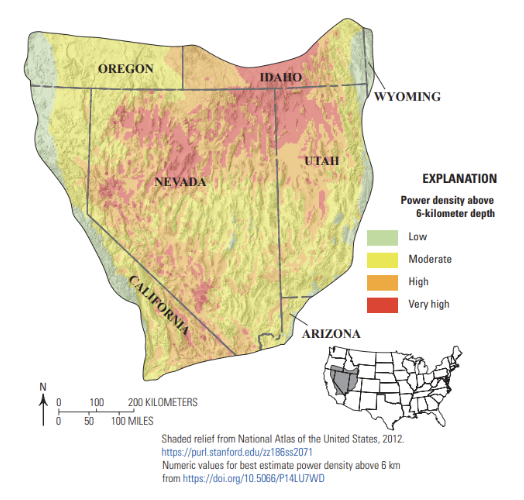According to the United States Geological Survey (USGS), the geothermal resources of Nevada’s Great Basin could potentially supply up to a tenth of the US’s electricity needs.
Currently, geothermal energy accounts for less than 1% of US energy production. It is mainly based on the exploitation of hydrothermal systems in which water circulates naturally through heated rocks. However, technological advances in recent years could change this.
The Great Basin of Nevada and adjacent regions contain vast areas where heat is trapped in impermeable rock. We now know how to harness this energy by creating fractures in the rock to allow water to flow and become heated before being brought to the surface and directed to turbines.
The USGS assessment indicates a potential 135 gigawatts of baseload energy if current technology works on a large scale in Nevada and the five neighboring states (California, Oregon, Idaho, Wyoming, and Utah).
“We started this work in the Great Basin because of the region’s history of geothermal activity, and we’ve discovered even greater potential for baseload energy than was previously known,” said Sarah Ryker, acting director of the USGS. “By leveraging this work and artificial intelligence and machine learning techniques, we will be able to more quickly and accurately assess the geothermal potential of the entire country.”
The next step for the USGS is to assess the potential of the Williston Basin in North Dakota.
Source:USGS


